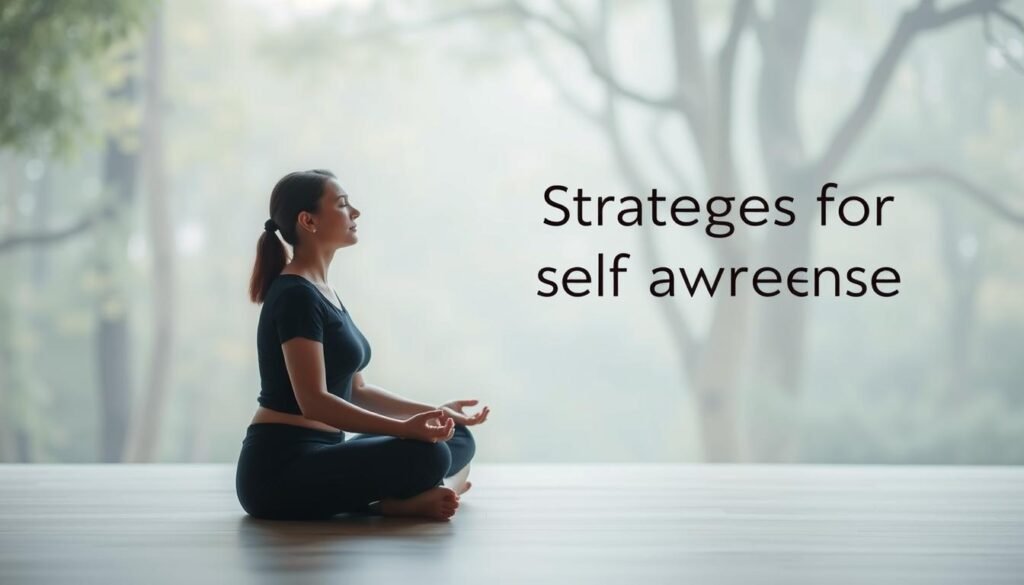Have you ever felt like your job is slowly draining your energy, leaving you emotionally exhausted? You’re not alone. Chronic workplace stress, often referred to as burnout, has become a modern epidemic, affecting 77% of professionals according to Gallup. The World Health Organization even classifies it as an occupational phenomenon, highlighting its widespread impact.
But here’s the good news: burnout doesn’t have to be inevitable. By incorporating a simple weekly self-check, you can identify early warning signs and take action before it escalates. This proactive approach not only safeguards your emotional fitness but also boosts your professional performance.
Companies are paying the price too, with 15-20% of payroll costs lost to burnout-related turnover. It’s clear that addressing this issue is not just a personal responsibility but a civic duty. Let’s explore how a weekly self-check can serve as your emotional countermeasure, helping you stay grounded and resilient.
Key Takeaways
- Burnout affects 77% of professionals, making it a widespread issue.
- The WHO classifies burnout as an occupational phenomenon.
- Weekly self-checks help detect early warning signs of stress.
- Companies lose 15-20% of payroll costs due to burnout-related turnover.
- Proactive self-care improves both personal wellbeing and job performance.
What Is Burnout and Why Should You Care?
Have you noticed a persistent sense of fatigue that doesn’t go away, even after a break? This could be a sign of burnout, a condition recognized by the World Health Organization as an occupational phenomenon. Unlike temporary stress, burnout is chronic and deeply impacts your emotional and physical health.
The WHO defines burnout through three core markers: exhaustion, cynicism, and reduced efficacy. Exhaustion leaves you drained, cynicism creates mental distance from your job, and reduced efficacy means your performance suffers. Psychiatrists also identify a fourth marker—passivity—where individuals feel powerless to change their situation.
According to Gallup, 76% of professionals experience burnout symptoms sometimes or often. This isn’t just a personal issue; it affects teams and organizations. Burnout spreads like a contagion, lowering morale and productivity across the board.
The physiological impacts are alarming. Studies show a 68% increased risk of cardiovascular issues linked to chronic stress. In the workplace, burnout leads to higher absenteeism and turnover. For example, one tech company reduced absenteeism by 40% after implementing burnout training programs.
Managers play a pivotal role in mitigating burnout. Teams with supportive leaders show 70% lower burnout rates. Embracing “Practical Optimism”—maintaining agency and hope—can also help break the cycle. However, ignoring burnout can lead to a snowball effect, where small stressors grow into overwhelming challenges.
Understanding burnout is the first step toward addressing it. By recognizing its signs and taking proactive measures, we can protect our wellbeing and create healthier workplaces.
Recognizing the Early Warning Signs of Burnout
Do you ever wake up dreading the day ahead, even before it begins? This could be one of the early warning signs that your body and mind are under too much pressure. Recognizing these signals early can help you take action before things escalate.
Physical symptoms like tension headaches, fatigue, or muscle pain often point to workplace stress. For example, prolonged screen time can lead to eye strain and headaches. These issues are not just physical—they’re your body’s way of saying something needs to change.
Another key indicator is the “Sunday Scaries”—that intense dread as the weekend ends. If you feel like this every week, it’s a red flag. Emotional researcher Christina Maslach outlines a 5-stage progression model, starting with enthusiasm and ending in complete exhaustion. Understanding this can help you identify where you are in the cycle.
A diagnostic checklist can also be useful. If you’ve experienced irritability, sleep disturbances, or apathy for more than seven days, it’s time to reassess. Healthy stress motivates, but toxic stress paralyzes. A mobile worker case study showed a 22% productivity drop before full burnout set in.
Neurochemical factors like cortisol dysregulation play a role too. Over time, chronic stress disrupts your body’s balance, leading to long-term health issues. A visual timeline shows burnout typically develops over 6-18 months, starting with subtle changes.
Pay attention to language shifts. Saying “I can’t” instead of “I don’t want to” can signal a loss of control. A self-test using the modified Maslach Burnout Inventory (MBI-GS) can help you assess your situation objectively.
By recognizing these signs, we can take steps to protect our wellbeing. Early intervention is key to staying resilient and productive.
Why Burnout Prevention at Work Starts with Self-Awareness
Have you ever felt like your energy is slipping away, even when you’re not busy? This could be a sign that you’re losing control over your energy levels. Self-awareness is the first step to reclaiming that sense of balance. By understanding your personal triggers, you can develop effective strategies to stay resilient.
One powerful tool is the “Energy Accounting” system. Think of it as a way to track your energy deposits and withdrawals. For example, if a meeting drains you, note it as a withdrawal. A walk outside? That’s a deposit. Over time, this system helps you calculate your depletion/recovery ratio, giving you a clearer picture of your energy flow.
Research from MIT shows that self-aware employees recover three times faster from stressors. They’re better at identifying when they’re hitting their limits. Common triggers include decision fatigue, task avoidance, and emotional exhaustion. Recognizing these early can help you take action before they escalate.
The “Burnout Equation” is another useful concept: Demands > Resources + Recovery. If your demands outweigh your resources and recovery time, burnout becomes inevitable. Creating personal baseline metrics can help you stay on top of this equation. For instance, track how many hours of sleep you need to feel refreshed.
Your circadian rhythms also play a part. Most people have vulnerability windows—times when they’re more prone to stress. For many, this is mid-afternoon. Knowing your rhythm can help you schedule demanding tasks during your peak energy times.
Managers often spot burnout signs in others before they notice them in themselves. In fact, 82% of managers report this phenomenon. This highlights the importance of self-awareness. Tools like the “Agency Audit” worksheet from “Practical Optimism” can help you assess your level of control over your work environment.
Finally, cognitive reframing can transform how you view challenges. For example, instead of thinking, “I have to finish this report,” try, “I’m contributing to a bigger goal.” Small shifts in perspective can make a big difference in how you handle stress.
Setting Boundaries to Protect Your Time and Energy
Do you often feel overwhelmed by the sheer volume of tasks on your plate? Setting clear boundaries is essential to managing your time and energy effectively. Without them, it’s easy to fall into the trap of overcommitment, leaving you drained and unproductive.
Prioritize Your Tasks
Not all tasks are created equal. The Eisenhower Matrix is a powerful tool for prioritizing. It helps you focus on what’s urgent and important, while delegating or eliminating the rest. This approach ensures you’re spending your time on what truly matters.
Time-blocking is another effective strategy. By scheduling specific hours for focused work, you can minimize distractions and maximize productivity. Pair this with your chronotype—your natural energy peaks—to tackle demanding tasks when you’re at your best.
Learn to Say No
Saying no can be challenging, but it’s a skill worth mastering. The “Power No” framework offers three polite refusal templates to help you decline without guilt. For example, “I’d love to help, but I’m currently focused on other priorities” is both respectful and firm.
Setting boundaries also means reducing unnecessary meetings. One consultant cut their meeting time by 40% by evaluating the ROI of each session. Use a “Meeting ROI Calculator” to assess whether a meeting is worth your hours.
Stick to Your Work Hours
Long hours don’t equal effectiveness. In fact, “Productivity Theater”—looking busy without achieving much—can lead to burnout. Establish clear start and end times for your workday, and communicate these boundaries to your team.
Physical signals like closing your door or wearing headphones can reinforce these boundaries. An “Escalation Protocol” can also help distinguish between urgent and important demands, ensuring you stay in control of your schedule.
By setting and maintaining these boundaries, you can protect your energy and focus on what truly matters. Small changes can lead to significant improvements in your productivity and wellbeing.
Practicing Self-Care: Beyond Bubble Baths
When we think of self-care, it’s easy to picture bubble baths and spa days, but true self-care goes much deeper. It’s about building habits that support our physical, mental, and emotional health. Let’s explore practical strategies that go beyond the surface to help us thrive.
Sleep and Nutrition
Sleep is the foundation of care. Research shows that consistent sleep patterns improve focus and mood. Aim for 7-9 hours nightly, and try a “Digital Sunset” protocol—turning off screens an hour before bed—to enhance sleep quality.
Nutrition also plays a key role. “Nutrition Periodization” aligns meals with your workload. For example, eat protein-rich snacks during busy periods to maintain energy. Hydration is equally important; even mild dehydration can reduce mental clarity.
Exercise and Mindfulness
Movement doesn’t have to mean long gym sessions. “Movement Snacks”—short, 5-minute desk exercises—can boost energy and focus. NASA studies show that even a 26-minute nap can improve performance by 34%.
Mindfulness practices, like 90-second “Micro-Recovery” breaks, help reset your mind. Simple techniques, such as deep breathing or stretching, can reduce stress and improve focus.
Social Connections
Strong relationships are vital for emotional health. Aim for at least three meaningful interactions daily. Whether it’s a quick chat with a colleague or a call with a friend, these connections can boost your mood and resilience.
Building a “Psychological PPE Kit” can also help. Include tools like resistance bands or stress balls in your workspace to manage tension throughout the day.
By focusing on these factors, we can create a sustainable way to care for ourselves. Small changes lead to big improvements in our overall wellbeing.
Reframing Your Perspective on Work
Ever feel like your daily tasks lack meaning or purpose? It’s easy to get caught up in the routine and lose sight of the bigger picture. Reframing how you view your work can reignite your passion and give you a renewed sense of direction.
One effective way to start is with “Impact Mapping.” This technique helps you visualize how your tasks contribute to larger goals. By seeing the ripple effect of your efforts, you can better understand your role in the broader mission.
Another powerful tool is “Job Crafting.” This method allows you to personalize your role by aligning tasks with your strengths and interests. It’s about taking ownership and shaping your work to fit your unique skills.
Daily reflection practices, like “Three Good Things,” can also shift your mindset. Each night, jot down three positive moments from your day. This simple habit trains your brain to focus on the good, fostering a more optimistic outlook.
For those struggling with negativity, “Anti-Pessimism” exercises can help. These cognitive restructuring techniques challenge unhelpful thoughts and replace them with balanced perspectives. It’s a practical part of building resilience.
Building confidence is another key strategy. A “Skill Inventory” helps you recognize your competencies, while a “Failure Resume” normalizes setbacks. Both tools remind you that growth comes from challenges.
Finally, consider “Controlled Detachment.” This approach helps you manage emotions by stepping back when needed. It’s about staying engaged without letting stress overwhelm you.
By adopting these techniques, you can transform how you view your work. Small shifts in perspective can lead to significant improvements in your satisfaction and productivity.
Seeking Support: You Don’t Have to Do It Alone
Feeling overwhelmed by stress doesn’t mean you have to face it alone. Building a strong support system is key to managing challenges effectively. Start by mapping your network using the “5 Circles of Workplace Resilience.” This tool helps you identify who can assist you in different areas of your life.
When asking for help, use the “ARC” model: Ask, Reason, Collaborate. This approach ensures your requests are clear and actionable. For example, instead of saying, “I’m stressed,” try, “Can we adjust this deadline? It will help me deliver better quality work.”
Employee Resource Groups (ERGs) are another valuable resource. These groups provide a safe space to share experiences and find solutions. If your workplace doesn’t have an ERG, consider starting one. It’s a great way to foster a supportive culture.
For mutual accountability, create a “Peer Support Contract” with a colleague. This agreement outlines how you’ll support each other during tough times. It’s a simple yet effective way to stay connected and motivated.
Don’t forget to leverage your manager. Conducting “Stay Interviews” can help you express your needs and set clear expectations. These conversations ensure your voice is heard and your concerns are addressed.
If professional help is needed, therapist-matching tools like BetterHelp or Talkspace can connect you with licensed experts. Employee Assistance Programs (EAPs) are also available in many workplaces. These programs offer confidential counseling and resources.
For discussing sensitive topics with HR, use “Mental Health Scripts.” These templates guide you in expressing your needs clearly and professionally. They ensure your concerns are taken seriously.
Finally, practice “Upward Feedback” to improve your workplace culture. Share constructive suggestions with leadership to create a more supportive environment. Combining multiple resources, known as “Support Stacking,” can amplify your resilience and wellbeing.
Taking Action: Your Weekly Burnout Prevention Checklist
Are you struggling to maintain focus and energy throughout your week? A simple weekly checklist can help you stay on track and avoid feeling overwhelmed. By taking small, consistent steps, you can manage your energy and workload more effectively.
Assess Your Energy Levels
Start by using the “Energy Audit” worksheet. This tool helps you assess your energy on a 10-point scale. Track how you feel at different times of the day to identify patterns. For example, if you notice a dip in the afternoon, schedule lighter tasks during that time.
Another helpful technique is the “Reset Rituals” method. These quick activities, like stretching or deep breathing, can help you recharge during transitions. Small breaks can make a big difference in maintaining your energy.
Evaluate Your Workload
Next, use the “Task Thermometer” to evaluate your workload. This technique helps you prioritize tasks based on urgency and importance. Focus on what truly matters and delegate or eliminate less critical tasks.
The “Delegation Matrix” is another useful tool. It helps you redistribute tasks effectively, ensuring you’re not taking on too much. By sharing responsibilities, you can reduce stress and improve productivity.
Plan for Relaxation
Finally, create a “Recovery Menu” with 50+ micro-break ideas. These activities, like listening to music or taking a short walk, can help you relax and recharge. Incorporate them into your daily routine to maintain balance.
Consider a “Digital Detox” schedule to limit screen time and restore cognitive energy. Set specific times to disconnect and focus on activities that bring you joy. Small changes can lead to significant improvements in your wellbeing.
By following this checklist, you can take proactive steps to manage your energy, workload, and relaxation. Consistent effort will help you stay resilient and focused throughout the week.
Conclusion: Prioritizing Your Well-Being
Taking charge of your well-being is a journey, not a one-time fix. It’s about creating habits that support your health and happiness over time. By focusing on balance, we can build a life that feels fulfilling and sustainable.
Start by calculating your “Wellbeing ROI.” This simple tool helps you see the value of investing in your health. Small changes, like setting clear expectations or taking regular breaks, can lead to big improvements.
Building a supportive culture around you is also key. Whether it’s through peer support or professional certifications, these steps help you stay resilient. Remember, sustainable performance beats heroic effort every time.
Let’s commit to making well-being a priority. Together, we can create a life that’s not just productive but also joyful and balanced.
FAQ
What are the early signs of feeling overwhelmed at work?
Early signs include constant fatigue, irritability, difficulty concentrating, and a sense of detachment from your role. Recognizing these symptoms early can help you take steps to address them before they escalate.
How can I set boundaries to protect my time and energy?
Start by prioritizing tasks, learning to say no to additional demands, and sticking to your designated work hours. Clear boundaries help maintain a healthy balance between your professional and personal life.
What self-care practices are most effective for managing stress?
Focus on quality sleep, balanced nutrition, regular exercise, and mindfulness practices. Additionally, nurturing social connections can provide emotional support and reduce feelings of isolation.
How can I reframe my perspective on work to reduce stress?
Shift your focus from perfection to progress and celebrate small wins. View challenges as opportunities for growth rather than obstacles, and remind yourself of the value you bring to your role.
When should I seek support for feeling overwhelmed?
If stress persists despite your efforts, or if it begins to affect your health and daily life, reach out to a manager, colleague, or mental health professional. Support systems are crucial for navigating difficult periods.
What should I include in a weekly self-check to prevent burnout?
Assess your energy levels, evaluate your workload, and plan time for relaxation. Regular check-ins help you stay proactive about your well-being and adjust as needed.








